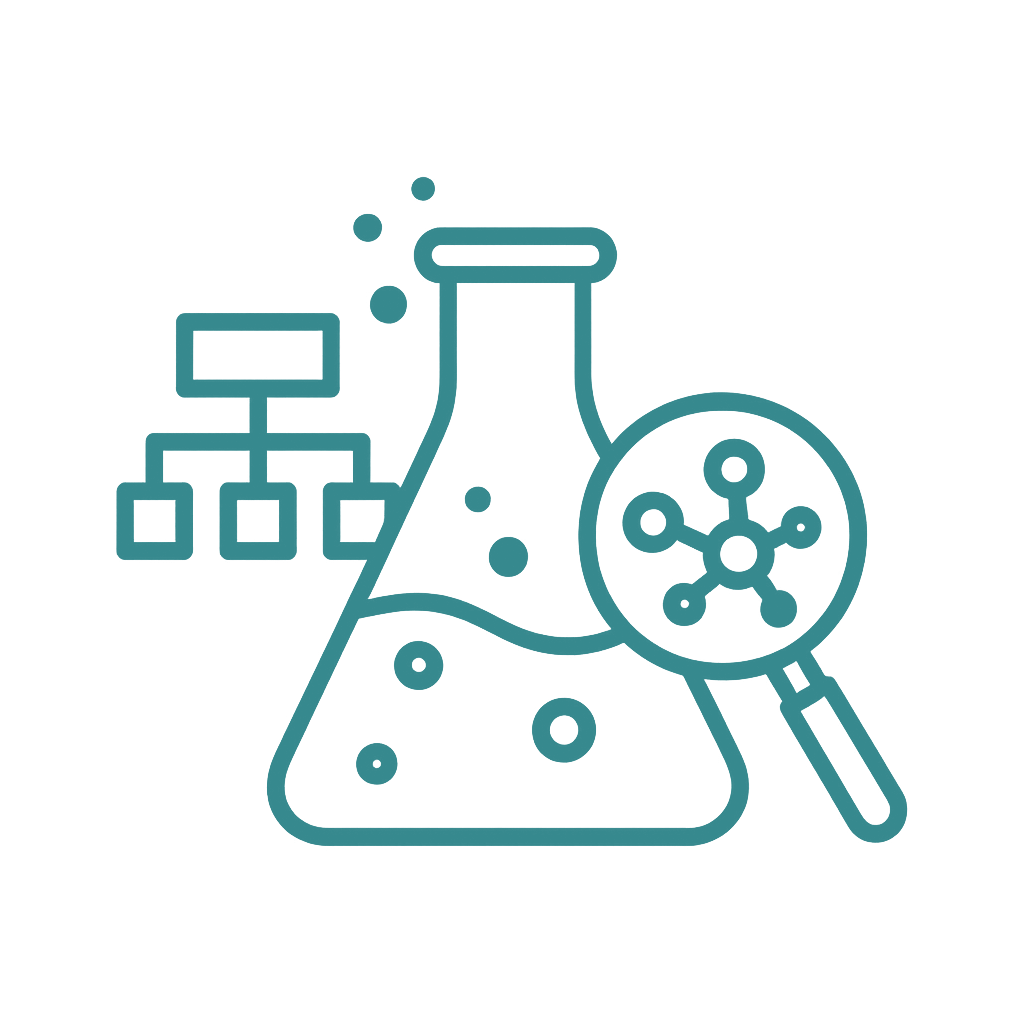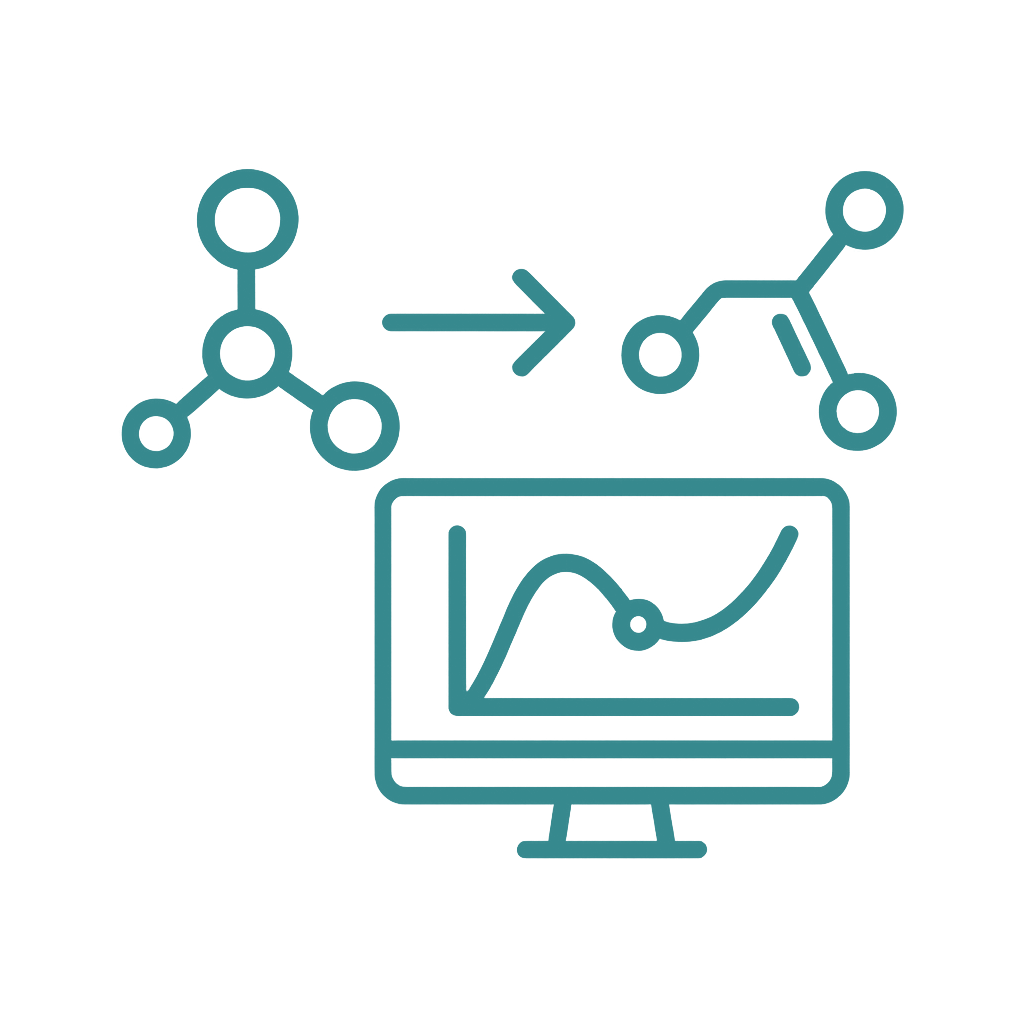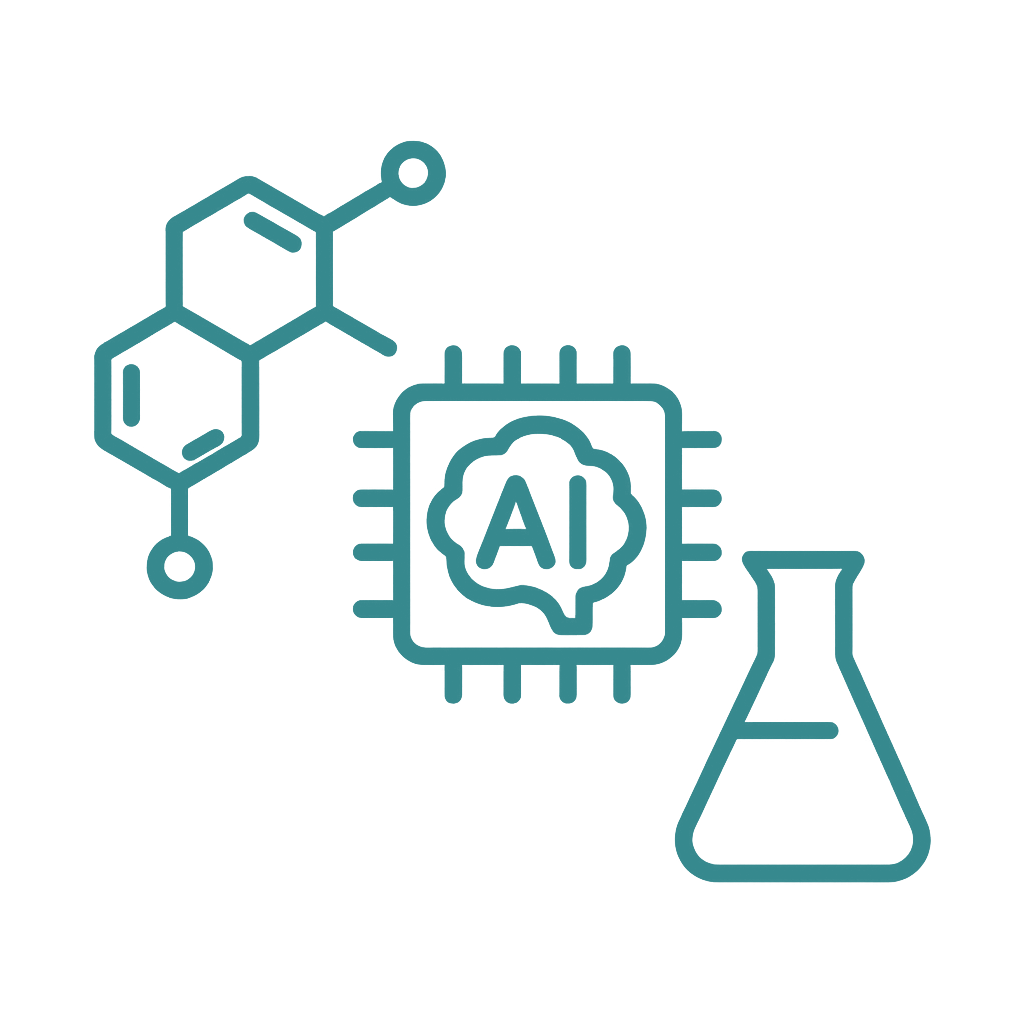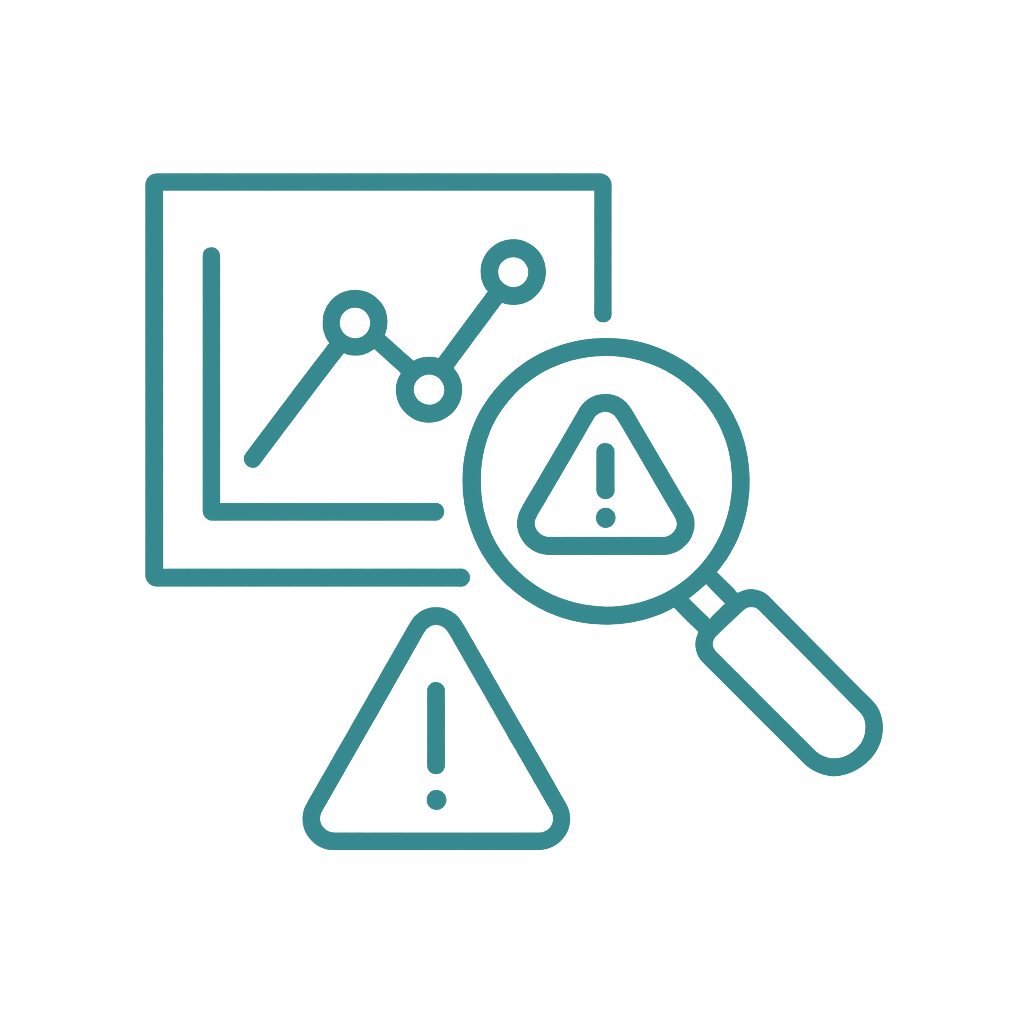Chemicals & Polymers
Simulate reactions, design new molecules, and reduce variability in production—using AI workflows grounded in chemistry and real-world data.

Chemical and polymer systems involve complex reactions, sensitive process conditions, and tightly coupled structure–property relationships—making development cycles slow and unpredictable. The MIND Platform enables R&D and process engineering teams to model reaction kinetics, predict molecular behavior, and monitor production variability using AI that integrates experimental data, simulation outputs, and domain-specific chemistry knowledge.

Catalyst Discovery
Reduce trial-and-error in catalyst development with data-driven candidate screening and selection.
- Screen large chemical spaces for high-activity, high-selectivity catalysts
- Integrate lab and simulated data to model structure–performance relationships
- Prioritize formulations with better lifetime, throughput, or energy efficiency

Reaction Pathway Prediction
Model and optimize complex chemical transformations before running experiments.
- Predict likely intermediates and byproducts from input conditions
- Simulate thermodynamics and kinetics across temperature and pressure ranges
- Reduce development time by narrowing down viable process windows

Molecular and Polymer Design
Use AI to explore materials and compounds with targeted properties for strength, reactivity, or function.
- Design monomers or additives with specific mechanical, thermal, or chemical properties
- Support structure–property predictions for novel polymers or blends
- Iterate faster by replacing brute-force testing with simulation-informed learning

Quality Control and Process Analytics
Detect anomalies and reduce off-spec product with AI-enabled process intelligence.
- Monitor batch and continuous processes in real time
- Flag deviations in yield, impurity, or process behavior before final QA
- Support root cause analysis and control loop recommendations
Solving Hard Problems Starts Here.
Let’s solve yours next. From simulation bottlenecks to multiscale manufacturing complexity—tell us what you’re up against. We’ll dig in together.
